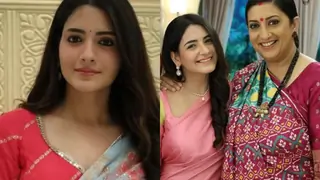In my past there is a Krishna.
In my dreams I dream of recreating a huge college of flautists, a veritable Vrindaban in which students will arrive to learn and study with satchels full of flutes, live in mud huts, eat at a common langar.
A modern Vrindaban from which a thousand flutes will ring out everyday. For what else is there?
When my breath is gone and I cannot play anymore what do I leave behind?
Some dedicated students! When you leave nothing behind, you cry at the point of death, but I still dream, I dare to dream that through my playing and through my students my flute will be left behind as the memory of Krishna.
Biography:
Born on 1 July 1938, in Allahabad, India, Hariprasad Chaurasia began his musical training as a vocalist under Pandit Rajaram. Within a year, he switched to flute-playing after hearing Pandit Bholanath, a noted flautist from Varanasi. He tutored under Pandit Bholanath for eight years and in 1957, barely out of his teens, he became a regular member of All India Radio in Cuttack, Orissa where he worked as a performer and a composer.
Hariprasad Chaurasia received further guidance from surbahar player Shrimati Annapurna Devi, daughter of the late Ustad Allaudin Khan and sister of Ali Akbar Khan.
Chaurasia has been amongst the few Indian classicists who have made a conscious effort to reach out and expand the audience for classical music. As a musician, Chaurasia is a rare combination of innovator and traditionalist and has significantly expanded the expressive possibilities of classical North Indian flute playing through his masterful blowing technique and his unique adaptation of alap and jor to the flute.
In 1984, in recognition of his outstanding contribution to music, he was given the National Award of the Sangeet Natak Academy. In 1992 he was awarded the Padma Bhushan and the Konarak Samman. In 1994, he was bestowed the Yash Bharati Sanman.
Pandit Hariprasad Chaurasia, the internationally renowned exponent of the bansuri or bamboo flute, surprisingly does not come from a long lineage of flautists. His father was a famous wrestler who had aspirations of his son following in his footsteps.
 The younger Chaurasia had an early love of music, however, and by the age of 15 was taking his first steps toward a lifetime as a performer by studying classical vocal with Pandit Raja Ram of Benares.
The younger Chaurasia had an early love of music, however, and by the age of 15 was taking his first steps toward a lifetime as a performer by studying classical vocal with Pandit Raja Ram of Benares.
Soon after, he heard a flute recital by Pandit Bholanath and was so impressed he changed his focus to studying the flute. When he was just 19, he got a job playing for All India Radio, Cuttack, Orissa, and within five years he was transferred to their headquarters in Bombay. There he got the additional exposure of performing in one of India's cultural centers and also studied with Shrimati Annapurna Devi, daughter of Ustaad Allauddin Khan of the Maihar School of Music.
There he established the creative peak of his career, developing a style that was respectful of tradition, yet full of innovation. Over a lifetime of performances, Pandit Hariprasad Chaurasia has become one of India's most-respected classical musicians, earning several awards, including the National Award of the Sangeet Natak Academy, which he won in 1984.
In 1992, he was awarded the Padma Bhushan and the Konarak Samman and in 1994, he was bestowed the Yash Bharati Sanman. He has collaborated with several western musicians, including John McLaughlin and Jan Gabarek, and has also composed music for a number of Indian films. He has performed throughout the world winning acclaim from varied audiences and fellow musicians including Yehudi Menuhin and Jean Pierre Rampal.
He heads the World Music Department at the Rotterdam Music Conservatory.
He is one of the busiest and most sought-after contemporary musicians in the world today.
He is also a dedicated teacher with several devoted art music students world-wide, many of whom are beginning to make their mark on the concert stage.Bansuri - The flute:
The Bansuri flute is one of the three original forms of rendering Indian Classical music according to ancient scriptures - Vaani (Vocal), Veena (String) and Venu (Flute). According to Hindu mythology, it is the instrument of Lord Krishna and is thus very popular for playing folk music. The introduction of the flute
 in modern Indian Classical concerts has been rather recent however, and the late Pandit Pannalal Ghosh has been widely recognized for this achievement.
in modern Indian Classical concerts has been rather recent however, and the late Pandit Pannalal Ghosh has been widely recognized for this achievement. Pandit Hariprasad Chaurasia further enhanced the bansuri playing style, with his innovative fingering and blowing techniques and took bansuri music to yet higher level.
The Hindustani bansuri flute usually consists of a blowing hole, six fingering holes and one tuning hole (though in some cases, flutes do not have tuning hole). The pitch of the bansuri varies depending on the length and diameter of the bore. The longer the flute, the deeper its pitch. However, longer flutes are also difficult to blow and finger. To balance this tradeoff, most Hindustani bansuri players tend to choose bansuri with pitch E (safed teen) and this flute is approximately 30" long.
Naturally, the bamboo suitable to make bansuri is not available freely. In its entire length, the flute bamboo should not have a node. If you think about it, it is not common to find a bamboo that is thin, straight and yet does not have a node for 30". Such bamboo species are only found in the jungles of Indian states of Assam and Kerala. Before making the flute, the bamboo is seasoned so that the natural resins strengthen it. It is then blocked with a piece of cork or rubber stopper from one end. Holes are then burned into it as drilling holes often breaks the bamboo. The proportions between bamboo length, bore, diameter of each hole and the location of stopper cork are extremely critical for getting the tuning of the bansuri right. Strings are then tied around the bamboo for both decoration and protection.
The Bansuri is a versatile instrument. It can easily produce all basic elements of Hindustani music variation such as meend (glide), gamak, kan. Versatile bansuri players also produce emotions in their music through variations in blowing style.
The Bansuri is a very simple instrument. Unlike string instruments, it does not need tuning once it is tuned by the flute maker. However, as Hariji puts it, it is Krishna's instrument and the Lord has made it deceptively simple. To become adept in the bansuri, one needs many months of practice.Along with Pandit ShivKumar Sharma he composed music for these Bollywood Movies:
- Chandni
- Darr
- Lamhe
- Silsila




























